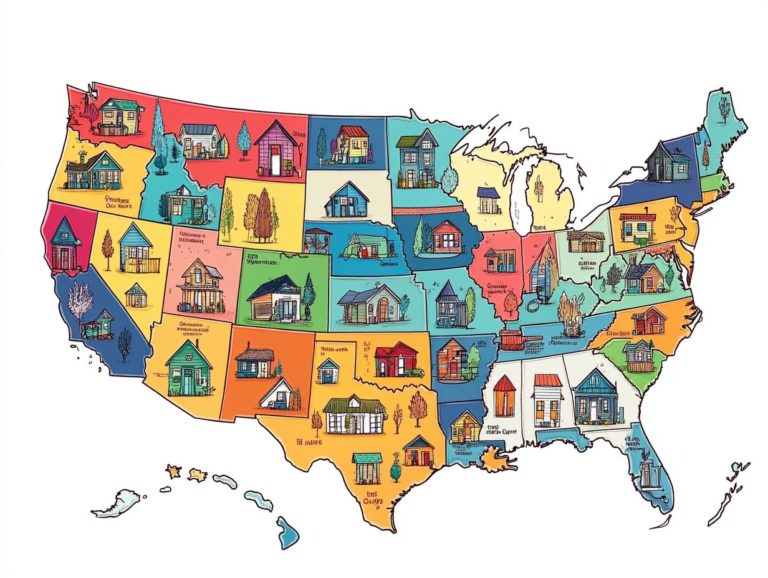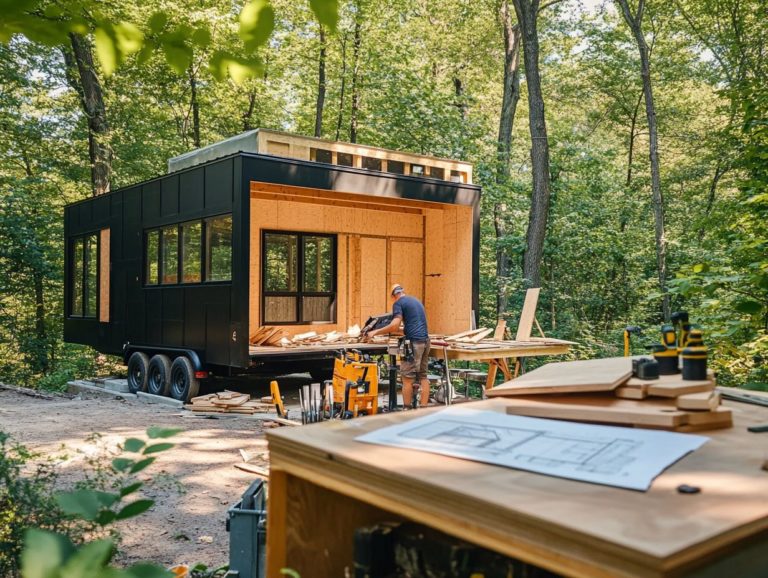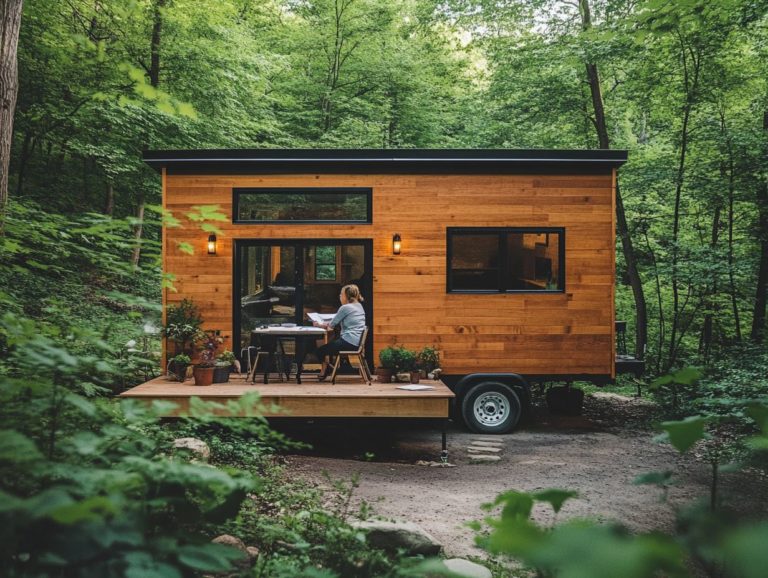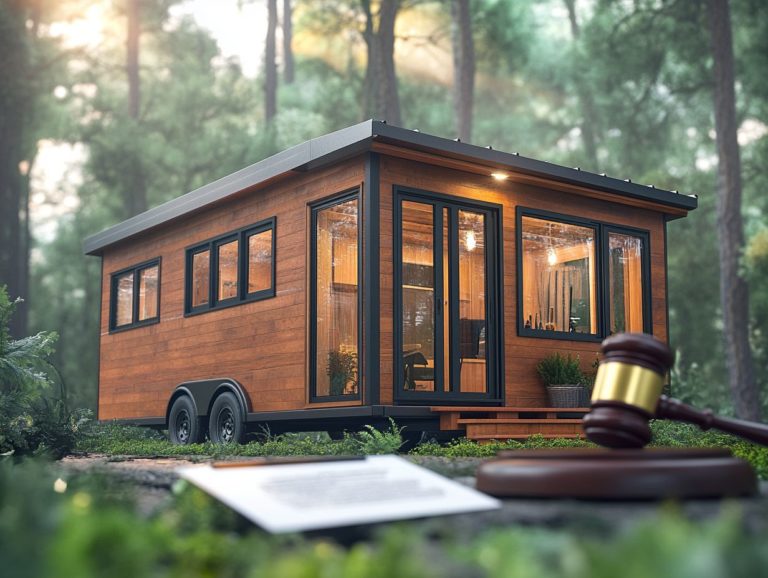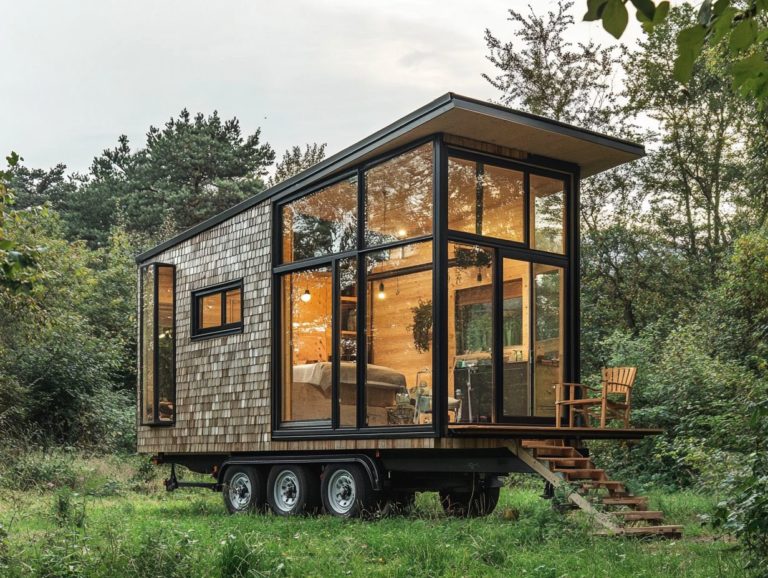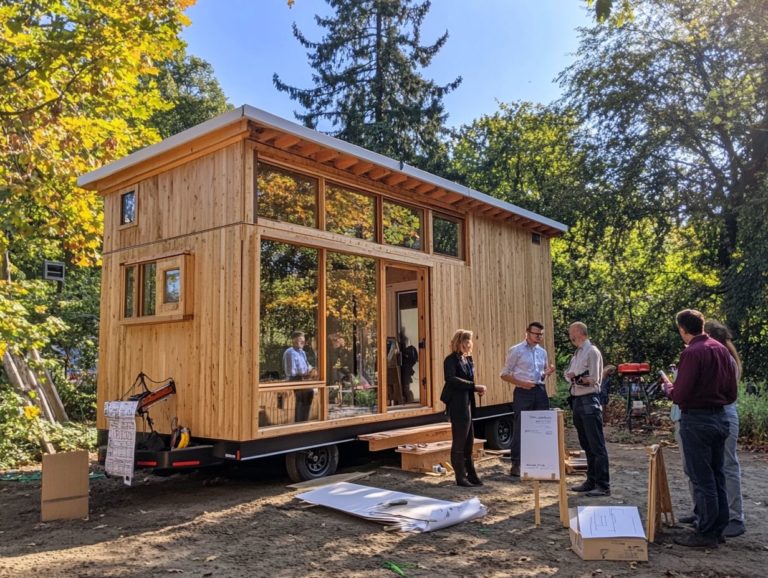How to Navigate Tiny House Legalities
Tiny houses are skyrocketing in popularity don t miss out on the chance to simplify your life and live sustainably. However, navigating the legal landscape can feel like an uphill battle for prospective tiny homeowners. From deciphering zoning laws and building codes to acquiring the necessary permits and preparing for inspections, the entire process can be quite overwhelming.
This article will clarify the essential legalities of tiny house living and provide insights to help you make informed decisions on your tiny house journey.
Contents [hide]
- Key Takeaways:
- Understanding Tiny House Legalities
- Zoning and Building Codes
- Permitting and Inspections
- Alternative Options for Tiny House Living
- Frequently Asked Questions
- What are the legal considerations when building a tiny house?
- Do I need a permit to build a tiny house?
- Can I legally live in a tiny house?
- How do I find out about zoning regulations for tiny houses in my area?
- Are there any specific building codes for tiny houses?
- What are some common challenges when navigating tiny house legalities?
Key Takeaways:
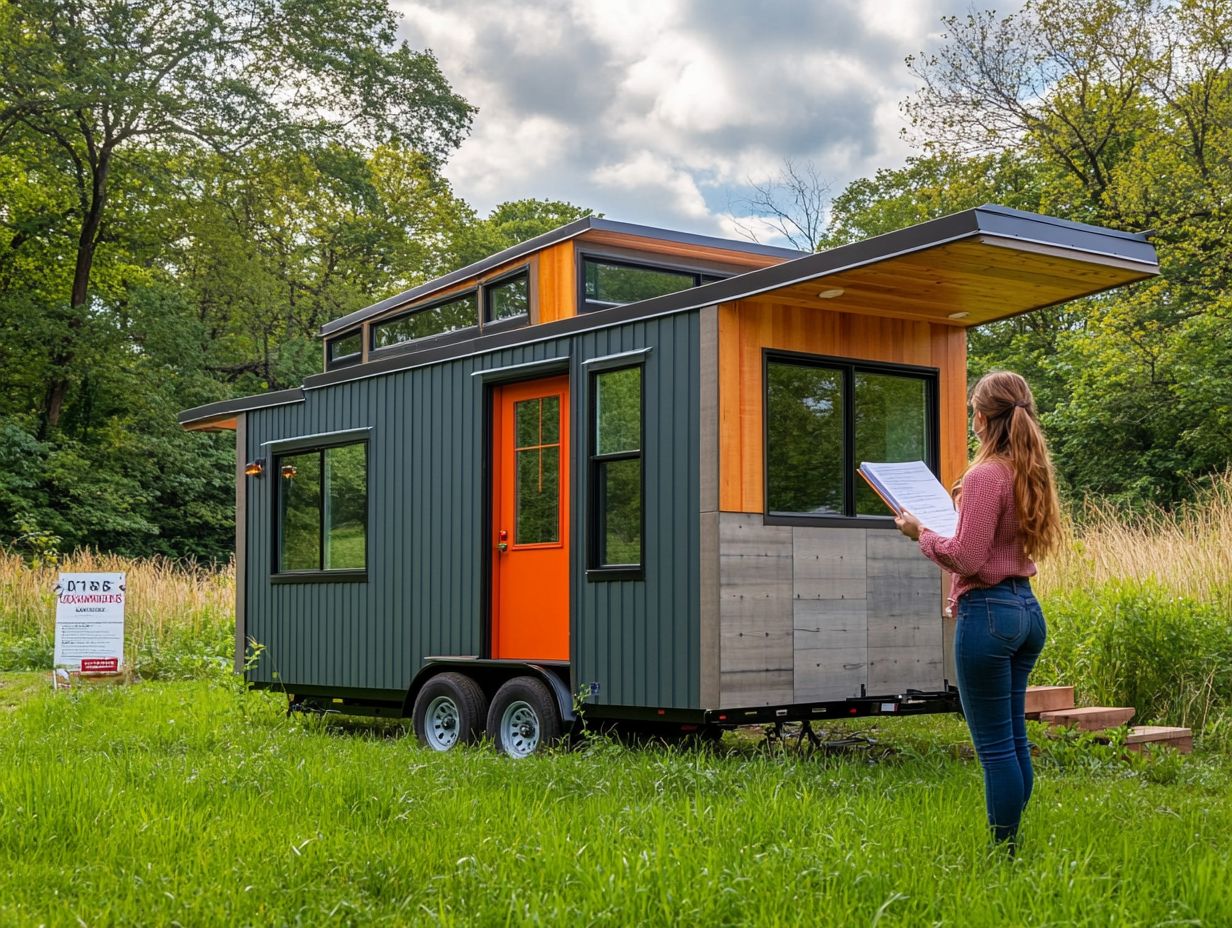
- Learn what qualifies as a tiny house and familiarize yourself with relevant laws and regulations before building or living in one.
- Research zoning laws in your area and follow building codes to ensure your tiny house is legally compliant and safe for occupancy.
- Obtain necessary permits and prepare for inspections to legally live in a tiny house. You can also consider RV living, mobile home parks, or community land trusts.
Understanding Tiny House Legalities
Mastering tiny house legalities is your key to unlocking this exciting lifestyle! As tiny homes grow in popularity, questions about their legality arise. This is especially true regarding the myriad zoning laws and building codes that could impact their construction and habitation.
In some jurisdictions, tiny homes might be categorized as small homes built on the same lot as a larger house or even RVs, each subject to its own unique regulations. From fire safety to minimum square footage requirements, navigating tiny house community regulations is crucial for you to achieve financial freedom through a simplified lifestyle.
What is a Tiny House?
A tiny house, often called a tiny home, is essentially a compact dwelling designed with an emphasis on efficient use of space and resources. It embodies a simplified lifestyle that resonates with many homeowners today.
These charming abodes typically showcase ingenious designs that maximize functionality while maintaining aesthetic appeal. With multifunctional furniture and smart storage solutions, every inch is thoughtfully utilized to create a cozy yet practical living environment.
The advantages go beyond just saving space. Tiny homes often come with a smaller environmental footprint, lower living costs, and the potential to live debt-free. The philosophy behind the tiny house movement invites you to embrace minimalism, prioritize experiences over possessions, and cultivate a deeper connection with your surroundings.
By adopting this lifestyle, you may discover a renewed sense of freedom and purpose.
Laws and Regulations
Laws and regulations surrounding tiny homes can vary significantly from one state to another and even between municipalities, presenting a legal maze for those aspiring to embrace the tiny home lifestyle. You’ll find yourself navigating a complex web of zoning laws, building codes, and fire safety regulations that can complicate your journey.
Take Massachusetts, for instance, where local ordinances might classify tiny homes as accessory dwelling units, imposing restrictions on their construction. Meanwhile, in Washington D.C., residents often grapple with the challenge of finding legally permissible land for their compact residences. Understanding tiny house zoning laws is crucial, as this variance not only impacts building permits and occupancy limits but also shapes local communities’ perceptions of tiny homes.
You may encounter various hurdles along the way, such as insufficient parking provisions, sanitation requirements, and even stringent homeowners’ association rules that can complicate your dream of downsizing, especially in areas with dense tiny home communities. Grasping these specific laws, particularly the importance of zoning, can significantly influence your experience of living in a tiny home.
Zoning and Building Codes
Zoning and building codes are essential to understanding the legality and viability of tiny homes. These regulations dictate not only where tiny houses can be situated but also the minimum square footage requirements that you must adhere to in different jurisdictions.
It s crucial to familiarize yourself with these codes to ensure your tiny home aligns with local laws.
Navigating Zoning Laws
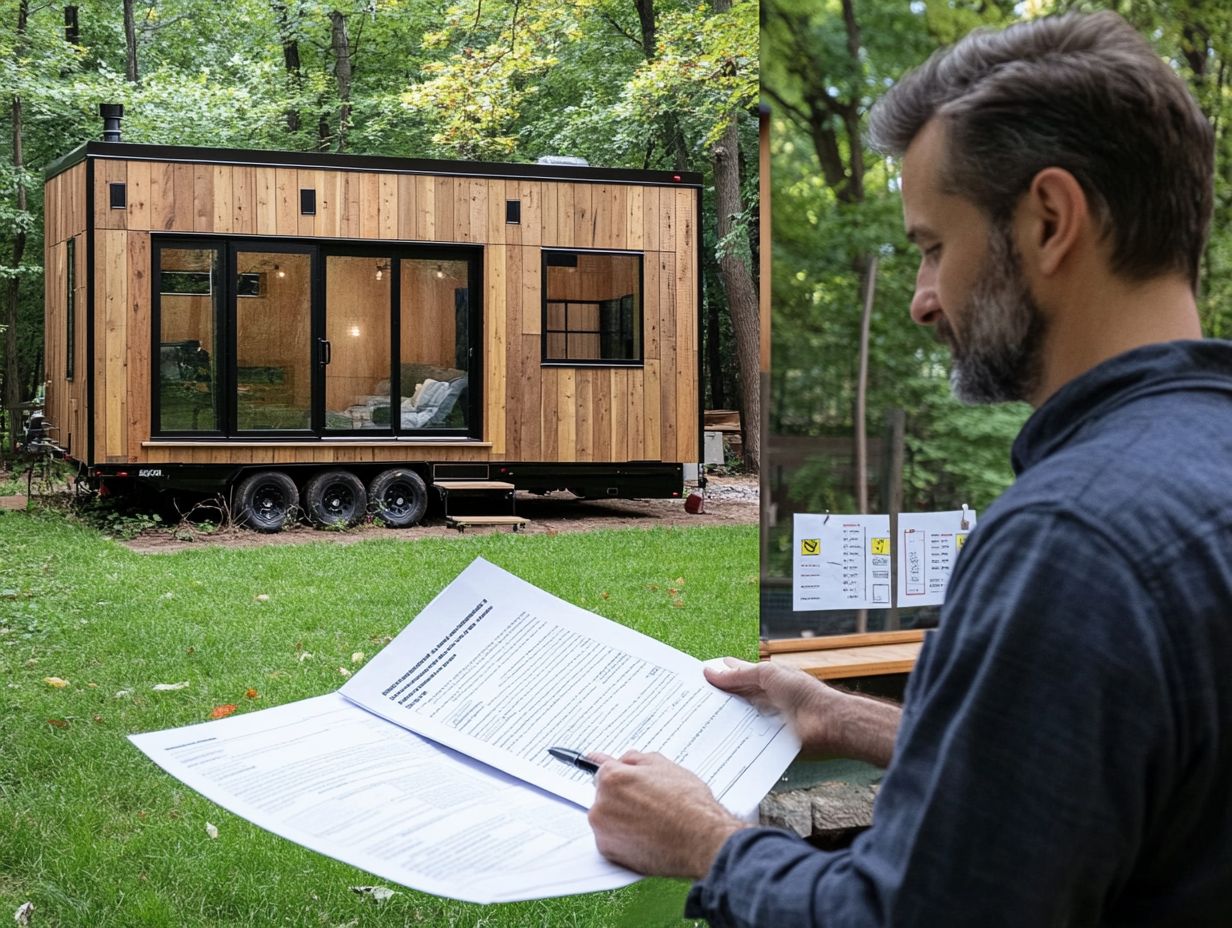
Navigating zoning laws is crucial for anyone wanting to start a tiny home community. These regulations dictate land use and can be heavily influenced by Homeowners Associations (HOAs) that impose restrictive covenants.
Understanding these laws means knowing where you can build and how different requirements can complicate the planning process. Tiny home enthusiasts often face challenges when HOAs limit home size and appearance, impacting the heart of minimalist living and your pursuit of financial freedom. For detailed information, refer to the tiny house regulations: a state-by-state guide.
Zoning classifications can vary from one area to another. This impacts everything from connectivity to public utilities, so it s essential to study local ordinances and connect with community stakeholders to reduce conflicts and encourage a harmonious development landscape.
Complying with Building Codes
Complying with building codes is essential for tiny homeowners. These regulations ensure the structural integrity of your home and address fire safety, which is especially important for Tiny Houses on Wheels (THOWs).
Navigating these regulations can be tricky but understanding the significance of construction materials and design layouts helps minimize fire hazards. Organizations like the International Code Council set guidelines that simplify compliance.
Use fire-rated materials and include safe exit options to enhance safety. By aligning your designs with industry standards, you can create safe, sustainable living spaces that meet legal requirements and provide peace of mind.
Permitting and Inspections
Securing permits and preparing for inspections are essential steps toward tiny home legality. These processes confirm your compliance with local laws and ensure adherence to building codes.
Obtaining Necessary Permits
Obtaining the right permits for a tiny home varies by location. Different towing regulations make it crucial to understand the requirements specific to your area.
Start by looking into local zoning laws, which dictate where tiny homes can be placed. Check municipal guidelines for setbacks (the required distance from property lines), utility connections, and safety codes.
Common challenges arise from differing views on mobile versus stationary classifications. Engage with local officials early to clarify necessary inspections and documents required for permits.
By staying proactive and organized, you can reduce headaches and ensure compliance with both state laws and local regulations.
Preparing for Inspections
Preparing for inspections is a crucial step in your tiny home journey. It ensures that you comply with building codes and fire safety regulations designed to protect both you and your community, especially if you are residing in a tiny home community.
Understanding the inspection process boosts your readiness and peace of mind. It’s wise to familiarize yourself with the specific codes that pertain to tiny homes, as these can differ from one local area to another. Knowing the permits needed for tiny house construction can greatly assist in this process.
Diligent preparation involves double-checking the wiring, plumbing, and structural integrity of your home. Engaging with a knowledgeable inspector ahead of time can provide valuable insights into what to expect, allowing you to make any necessary adjustments before the official walkthrough.
Having all your documentation like permits and plans easily accessible will not only streamline the process but also help you sidestep any unnecessary complications later on, especially concerning property taxes and fire safety.
Alternative Options for Tiny House Living
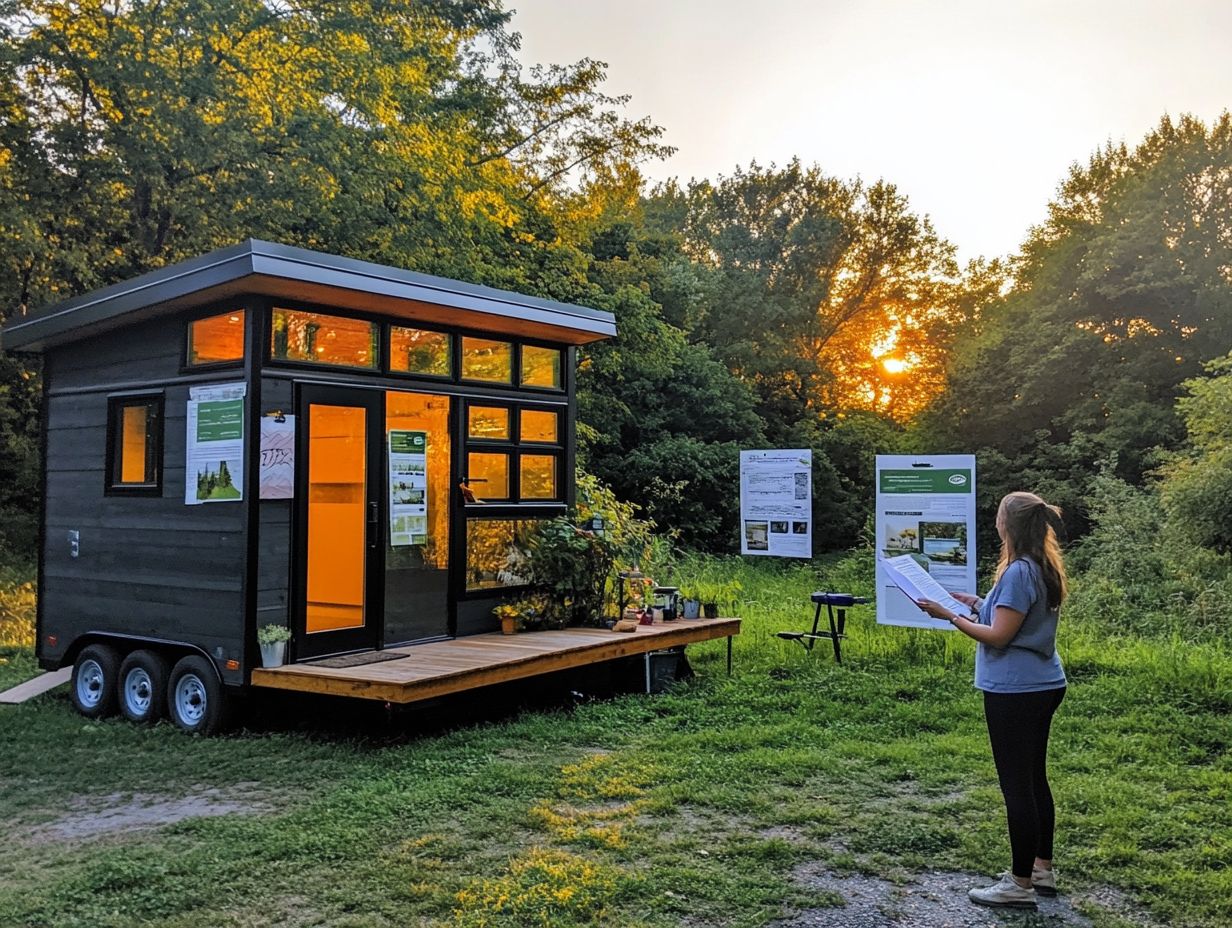
When considering tiny house living, you might explore alternative options like RV living, mobile homes, and community land trusts, which can be appealing choices for simplifying one s lifestyle.
Each choice presents its own distinct advantages and challenges, catering to your desire for a simplified lifestyle while allowing you to weigh what aligns best with your needs and aspirations, including considerations of fire safety and local regulations.
RV Living
RV living presents a flexible and mobile lifestyle that many find appealing, but it also comes with its own set of towing regulations and considerations that you must grasp as an aspiring tiny homeowner, particularly if you wish to transition between tiny home communities.
The charm of this nomadic existence isn t just about traversing diverse landscapes; it’s also about the financial freedom that comes with it. By cutting out traditional housing expenses, you can redirect your resources toward travel adventures, nature explorations, and personal passions that truly ignite your spirit.
Make sure you familiarize yourself with local and state regulations, including campground policies and vehicle weight restrictions, to enhance your RV adventure.
While the idea of life on the road is undeniably enticing, grasping these rules can significantly enhance your experience, making RV living not only enjoyable but also compliant.
Mobile Home Parks
In places like Florida and California, mobile home parks present an attractive option for those drawn to tiny homes, allowing you to savor the joys of community living while often encountering different property tax structures than traditional homeowners.
These parks cultivate a distinctive atmosphere where you can fully embrace a minimalist lifestyle and build meaningful connections with your neighbors. The shared amenities and communal spaces naturally foster social interaction, making it effortless for residents to establish lasting relationships.
Financial considerations play a pivotal role in this alternative living arrangement. With reduced costs linked to land ownership, lower utility bills, and affordable parking fees, this choice becomes appealing for many. These factors enable tiny homeowners like you to prioritize financial stability while still reaping the rewards of being part of a supportive community.
Community Land Trusts
Imagine living in a community where homeownership is within reach! Community land trusts (CLTs) offer a groundbreaking solution for affordable housing.
They allow you to thrive in tiny home communities, easing the financial strain that often comes with homeownership. These models work by separating the ownership of land from the homes built on it, making it easier for low- and middle-income individuals like yourself to achieve the dream of homeownership while also adhering to tiny house building codes.
With this framework, CLTs lease the land to you at an affordable rate. This enables you to build equity without facing the hefty costs associated with traditional homeownership.
This setup not only paves the way for your financial independence but also cultivates a strong sense of community. Residents like you invest time and resources into caring for their properties.
CLTs also frequently offer educational resources and support, enabling you to navigate the intricacies of property ownership and financial management. This ultimately enhances your overall quality of life.
Frequently Asked Questions
What are the legal considerations when building a tiny house?
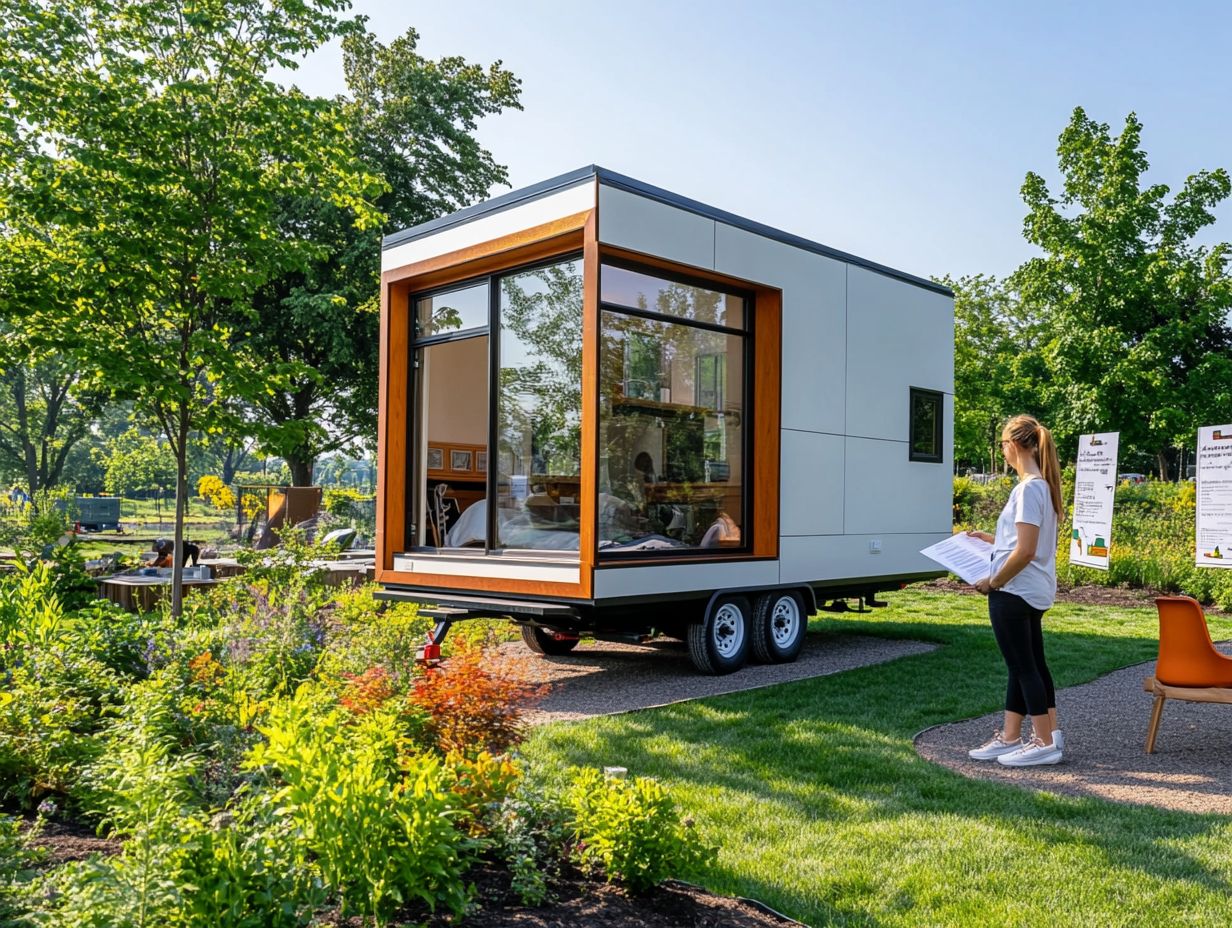
When building a tiny house, consider zoning, building codes, and permits. Zoning regulations dictate where you can legally place your tiny house and building codes ensure safety.
Do I need a permit to build a tiny house?
Yes, you will need to obtain a permit from your local government to build a tiny house. Each state and municipality may have different requirements, so it is important to research the specific regulations in your area.
Can I legally live in a tiny house?
This depends on the zoning regulations in your area. Some places allow tiny houses as permanent residences, while others permit them only as temporary structures for recreational use.
How do I find out about zoning regulations for tiny houses in my area?
You can research zoning laws for tiny houses by contacting your local government or checking their website. Consulting with a professional who specializes in tiny house legalities can also be beneficial.
Are there any specific building codes for tiny houses?
While there are no specific building codes for tiny houses, they are typically built to meet the same standards as traditional homes. This includes structural integrity, electrical and plumbing systems, and fire safety measures.
What are some common challenges when navigating tiny house legalities?
Some common challenges include finding suitable land to place your tiny house, obtaining necessary permits, and dealing with zoning restrictions. It is crucial to thoroughly research and understand the legalities surrounding tiny houses in your area to avoid any potential roadblocks or complications.

